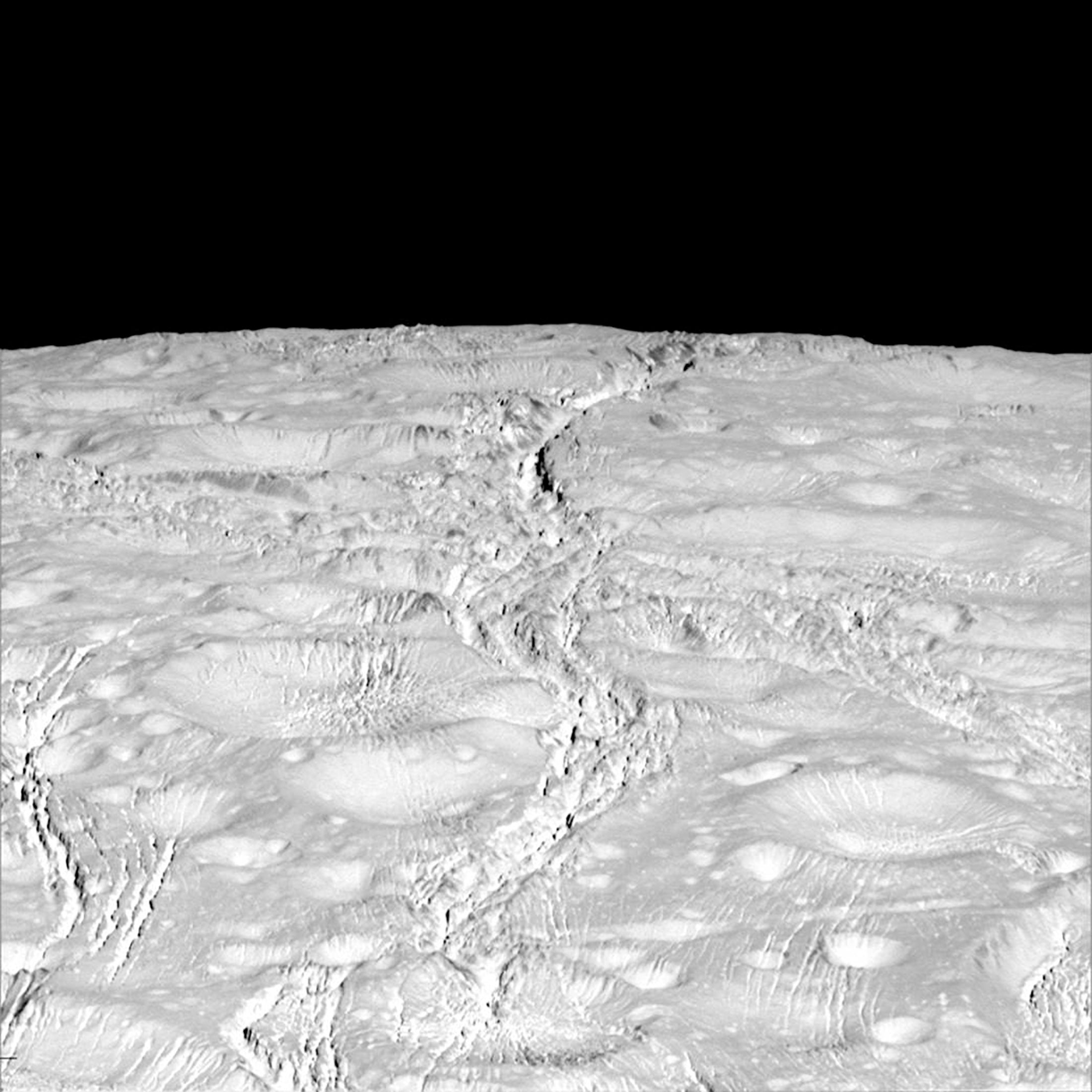Enceladus: New Nasa images reveal surface of moon in our Solar System that could one day be habitable to humans
And soon they'll have a sample of its water

Just a few weeks ago scientists said that Enceladus, one of Saturn’s many moons, has an ocean underneath its icy exterior — meaning it might have the capacity to support life.
For the first time since that long held-scientific suspicion was resolved, Nasa has captured images of the moon’s distinct landscape.
The Cassini orbiter passed by Enceladus on October 14, and from a distance of a little more 1,000 miles grabbed pictures of its northernmost region.
One side of the top is covered in cracks and crater marks, the other is much smoother.
The cracks spotted are similar to ones found Earth’s own moon, often attributed to the gravitational pull of our planet.
"The northern regions are crisscrossed by a spidery network of gossamer-thin cracks that slice through the craters," said Paul Helfenstein, a member of the Cassini team at Cornell University.
"These thin cracks are ubiquitous on Enceladus, and now we see that they extend across the northern terrains as well."
What’s so exciting about this is that the moon, the sixth largest though a tenth of the size of Titan, already has an ocean so any indication of geothermic activity could theoretically help produce life.
Let’s not get ahead of ourselves; it’s not exactly alien mega-structures in a far off solar system.
But it’s worth noting that we’re also getting closer to solving the space mysteries in our own backyard, with Cassini getting even closer to Enceladus in less than two weeks time.
When it gets within 30 miles of the southernmost surface, Cassini will capture more than images — it will capture moon water.
And then we’ll be able to see just how habitable Enceladus is.
Subscribe to Independent Premium to bookmark this article
Want to bookmark your favourite articles and stories to read or reference later? Start your Independent Premium subscription today.

Join our commenting forum
Join thought-provoking conversations, follow other Independent readers and see their replies